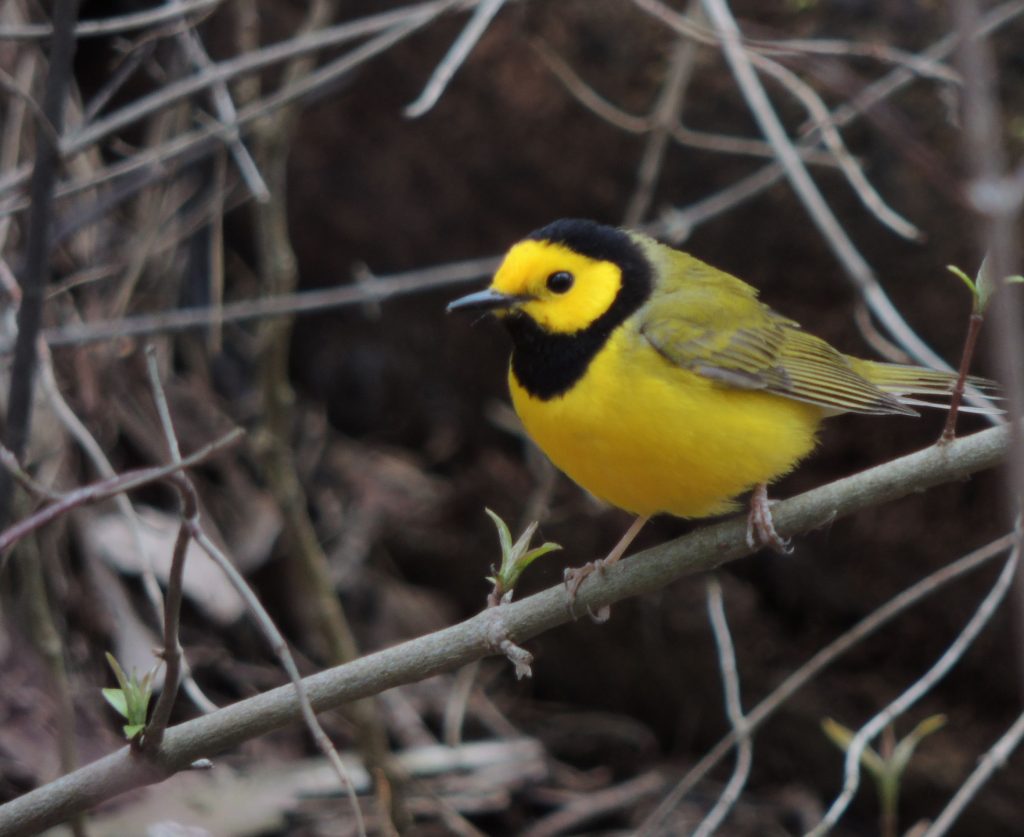August 4 2017. Spooky Hollow, Normandale ON. It’s an hour and a half’s drive from home to what is probably my favourite bit of old Ontario forest. It’s a nature sanctuary purchased some fifty years ago by our local naturalists’ club and valued for its richness: towering maple, beech and oak forest, a clear, fast-running,sand-bottom, cold-water stream, and, what I came to enjoy today, many species of ferns growing luxuriantly. I had little expectation of seeing birds, well, I thought I might hear Black-throated Green Warblers calling in the tops of the Eastern Hemlocks since they breed here, but it’s late in the season and I didn’t. In any case my mind was on fern study, the threatening thunder-storm and fending off mosquitoes. But unexpectedly the day produced two bird experiences following in quick succession.
Pushing between dripping branches I heard a little ‘chink’ note repeated several times to my right. My first thought was that an Eastern Chipmunk was warning me off, but no, the longer I listened the more I came to appreciate that I was hearing a bird’s alarm note. I remembered how on just about this same date in 2011 and in almost the same spot I came face to face with an adult Acadian Flycatcher feeding a fledgling; could this be a repeat performance I wondered. It wasn’t, but watching me closely was a beady-eyed, bright-ish yellow warbler of some kind. Yellow Warbler was my first reaction but the habitat was all wrong. I snapped several quick photos to examine later if needed and then did what I should have done in the first place, used my binoculars for a better look. Right away, something inside me said female Hooded Warbler. Here she is. (Click on any picture to enlarge it.)
I know that Hooded warblers breed in this forest so it wasn’t such a surprise, but the hour and a half drive from home, better things to do, and their characteristic evasiveness scarcely makes it worthwhile to come here looking for them in spring. The male is a bird photographers’ favourite, he’s so strikingly handsome. Here’s one seen and photographed in May of last year.

Since she was alarmed it was time to move along and, still feeling a touch jubilant about the warbler, I very soon passed a tip-up, the root-base of a fallen tree. Some forests have more tip-ups than others; this place has many probably the sandy soil and the maturity of the forest play a part. Eventually long after the tree’s fall and total decay, evidence of tip-ups remain as small humps and hollows on the forest floor. I was thinking back to how, as a young bird-watcher, we used to inspect the underside of tip-ups for birds’ nests, they offer many sheltered crevices and hollows that suit wrens in particular. And there, almost to order today was, a wren’s nest – or at least that’s what I suppose it was. Here are two photos, see if you can spot the slightly mossy entrance to the nest.




